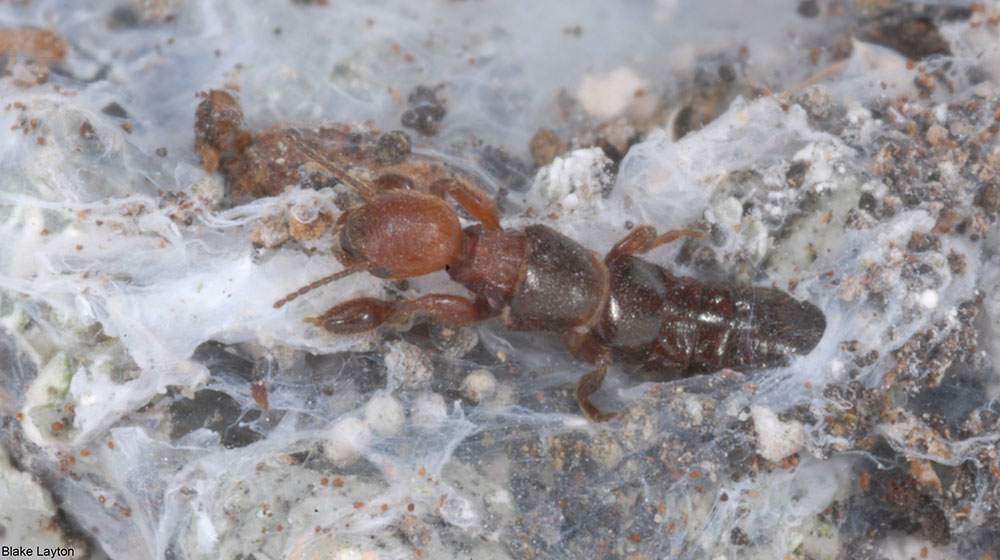Webspinners | Vol. 3, No. 22
Related News
July 10, 2015
June 29, 2015
June 17, 2015

Various species
Order: Embioptera
Now here’s an insect you don’t see every day. Webspinners occur throughout the world, especially in tropical and sub-tropical climates, but they are usually so inconspicuous they are not seen very often. This one was in a sample submitted by a homeowner in the Mississippi Delta who noticed that the lower trunk of a large pecan tree was completely encased in silk webbing, and there were several live webspinners on the sample of bark they mailed in. These insects are a little over ½ inch long, and were living in tunnels they created in, and under, the silk webbing.
Webspinners are such unusual insects that they have their own order, the order Embioptera, and there are only a few hundred known species in the world. Unique to all other web-spinning arthropods, they spin silk from specially enlarged structures on their front legs (see photo). Webspinners feed on organic materials such as moss, lichens and decaying plant material. This particular species was using the webbing it produced to create a communal protective covering over the tree bark so they could safely forage underneath. It took an unusually large colony to produce enough silk to encase an entire tree trunk. Other species of webspinners occur on rocks or in leaf litter.
Residents of the two lower tiers of Mississippi counties sometimes see trees that have their trunks encased in webbing by another unusual insect, the webbing bark louse. Other than the temporary aesthetic effects, neither of these web-spinning insects is harmful to trees.
Blake Layton, Extension Entomology Specialist, Mississippi State University Extension Service.
The information given here is for educational purposes only. Always read and follow current label directions. Specific commercial products are mentioned as examples only and reference to specific products or trade names is made with the understanding that no discrimination is intended to other products that may also be suitable and appropriately labeled.
Sign up to receive Bug's Eye View.